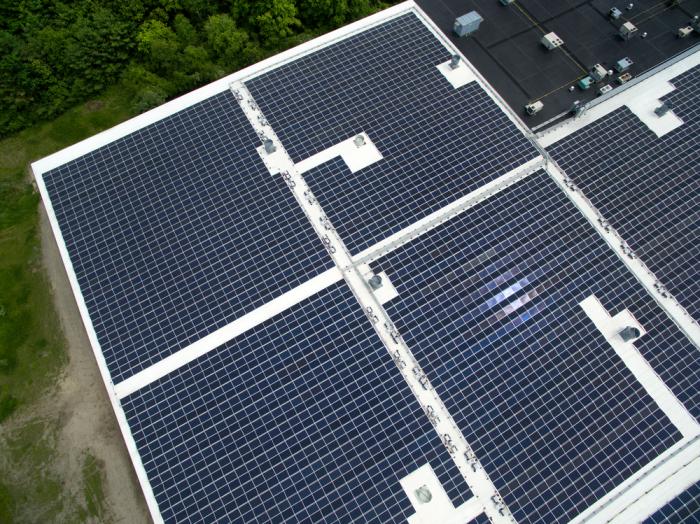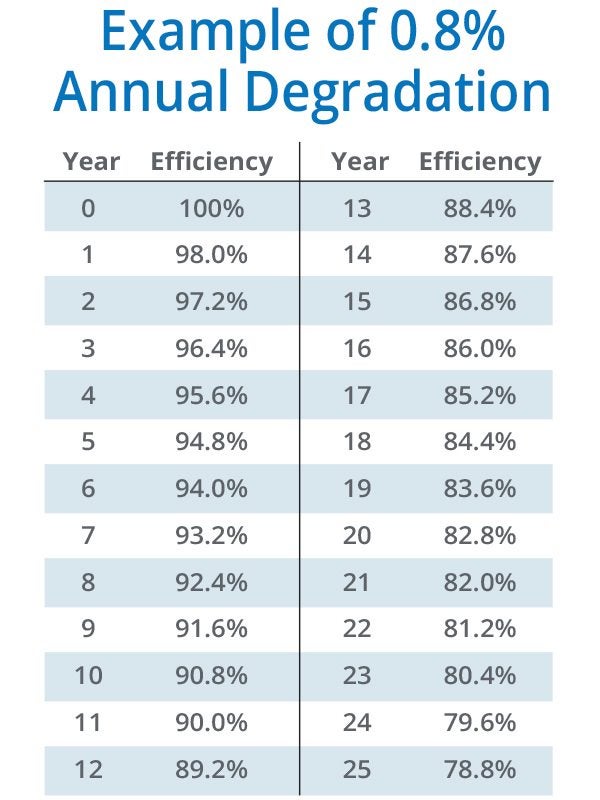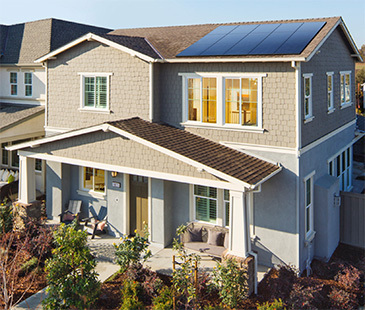
Editor’s Note: In 2020, SunPower announced the completion of the strategic spin-off of its manufacturing division into a separate business named Maxeon Solar Technologies, Ltd. As a result, SunPower has expanded its offerings to drive future growth. The SunPower Equinox® system now offers multiple panel options, including front- and back-contact panels, all of which are responsibly and rigorously quality tested to provide the best energy solution for your home.
In February 2022, SunPower’s Commercial and Industrial Solutions business was acquired by TotalEnergies. Learn more about sustainability options for these industries.
There are a number of important characteristics to consider when making a solar panel decision for your business. One of the most critical is understanding the degradation rate of the solar panels you’re evaluating, how it compares among manufacturers and what impact solar panel degradation can have on your organization’s bottom line.
But exactly what do the terms “degradation” and “degradation rate” mean—and how much should the degradation rate of your commercial solar panels factor into the decisions you make? Let’s take a quick look.
What is solar panel degradation and what does “degradation rate” mean?
It might sound ominous, but “degradation” is just an industry term used to describe the decline in output that all solar panels experience over time. In fact, were he around today, Ben Franklin would no doubt have added solar panel degradation to his famously short list of life’s certainties.

So, if you’re wondering, “Do solar panels degrade over time?”, the short answer is “Yes.” All solar panels degrade. But they don’t all degrade at the same rate—that’s what matters and warrants a closer look. In their first year of operation, panels typically undergo short-term degradation ranging from less than 1% to 3%. After that, according to a recent study, solar panel performance declines by an average of 0.8% to 0.9% each year.
For example, if a panel’s first-year, short-term degradation was 2%, it would be operating at 98% efficiency going into year two. From that point, assuming it degrades at 0.8% per year thereafter, it would still be operating at 78.8% efficiency in year 25 (see table).
Now, you’re probably wondering, “How long do solar panels last anyway?” That's a good question. Comprehensive testing done by commercial solar panel manufacturers suggests that the lifespan of solar panels is somewhere between 25 to 40 years, depending on the manufacturer. That doesn’t mean panels stop working or generating electricity after that time. It simply means their energy production has declined to a point beyond what manufacturers refer to as a panel’s “useful life.”
What impact can commercial solar degradation rates have on your business?
We’ve seen how an average solar panel would degrade. But what if you’re considering a panel that degrades more quickly, perhaps at a rate of 1.0% each year—or more slowly, such as a rate of just 0.25% each year? Is that a big difference?
It definitely can be. The fact is, those six- or seven-tenths of a percentage point in degradation rate could add up to thousands of kilowatt-hours of energy lost every year, depending on the number of panels and how long they’ve been generating electricity. That means you could end up spending money by having to draw power from the grid, rather than from your installed solar panels. For a large commercial installation, that could mean hundreds of thousands of dollars over the system’s lifetime.
That’s why it’s important to consider whether it would make better long-term financial sense to save upfront on lower-quality panels with a higher degradation rate, or invest in higher-quality (and potentially more expensive) panels that degrade more slowly. You should always compare the potential cost savings upfront as you evaluate your options.
The difference in degradation rate can translate into a significant amount of money over the next 10, 15 or 25+ years.
Causes of solar panel degradation—and how to keep the rate as low as possible
In general, solar panels are extremely durable and built to withstand high winds and heavy snow loads. That said, keeping an eye on your commercial solar panel system—and making sure it’s well-maintained—could lead to a lower degradation rate each year and more output over the long term. Here’s a look at what causes solar panel degradation and a few tips for keeping the rate low:
Depending on the quality of your panels’ materials, the more extreme the weather conditions they’re exposed to (e.g., high winds and humidity, scorching rooftop temperatures, annual freeze/thaw cycles), the faster they might degrade. If your panels will be installed in an environment where weather could be a factor, ask about ways they could be protected from the elements.
Check your panels annually for physical damage, such as trees or bushes blowing in the wind and creating scratches. The more surface scratches on your panels, the faster they degrade. The placement of your solar panels—such as ground, rooftop or carport installations—can also impact how quickly your panels degrade.
While not always necessary, cleaning your panels can also play an important role in making sure they don’t degrade at a higher rate than expected. Monitor changes in the power output of your solar panels before and after cleaning, as well as over different time intervals. Take notes and evaluate what works. You might find that the costs of cleaning may, in fact, be greater than the costs associated with a lower degradation rate.
Key takeaways about commercial solar degradation rates
As you compare commercial solar panels for your organization, here are some important points about degradation:
Understand the degradation rate of the panels you’re considering, as well as what that decrease in energy output would mean in lost power—and dollars and cents—over the life of the panels.
Assess the financial impact of choosing a panel with lower upfront cost but a higher degradation rate versus a panel with higher upfront cost but a lower degradation rate. The providers you’re considering should be able to give you a cost-savings analysis over 10, 15 and 25 years.
Find out what steps your provider recommends in terms of placement, ongoing inspections, cleaning and maintenance to keep your solar panel degradation rate as low as possible.
It’s a certainty that all solar panels will degrade over time. However, conducting some thorough research upfront—and asking the right types of questions—can help you make the best commercial solar panel choice for your organization over the long term.

